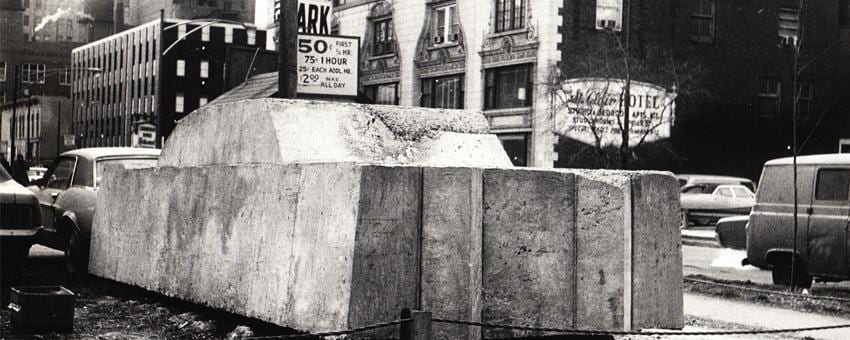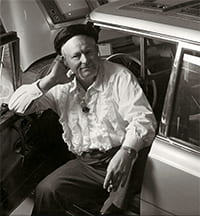History
Concrete Happenings: Fall 2016 – Spring 2017
Don’t just look at art. Grapple with it.

David Katzive, installation view of Wolf Vostell’s Concrete Traffic, January 1970.
(Collection of the Museum of Contemporary Art Chicago. Photo © MCA Chicago.)
About Concrete Traffic
Conceived by Fluxus artist Wolf Vostell (1932–1998) as an “instant happening” and an “event sculpture,” Concrete Traffic was commissioned by the Museum of Contemporary Art Chicago (MCA). On the morning of January 16, 1970, in a busy Chicago commuter parking lot, Chicago artisans brought Vostell’s vision to life, pouring concrete over a 1957 Cadillac deVille to create the monumental concrete sculpture. Concrete Traffic spent several months in the lot until the artist and the MCA gifted the sculpture to the University of Chicago, where it was sited in an outdoor lot at 60th Street and South Ingleside Avenue—the current site of the Reva and David Logan Center for the Arts.
Concrete Traffic spent nearly 40 years exposed to the elements, until a major four-year conservation effort was undertaken between June 2012 and September 2016, complemented by material investigation and a series of workshops. (For more information about these efforts, visit neubauercollegium.uchicago.edu).
As this work came to a close, a partnership of UChicago arts organizations envisioned Concrete Happenings.

